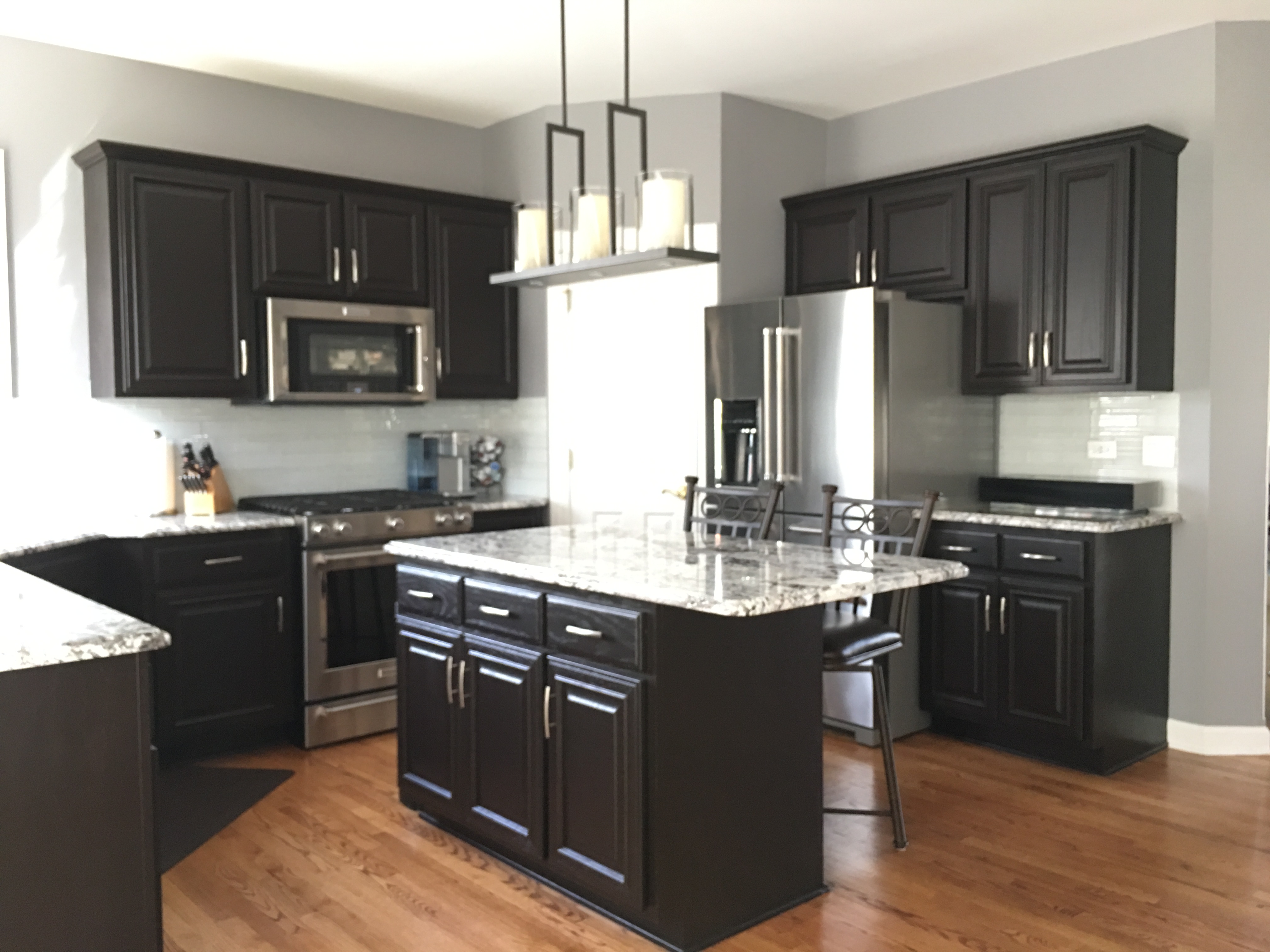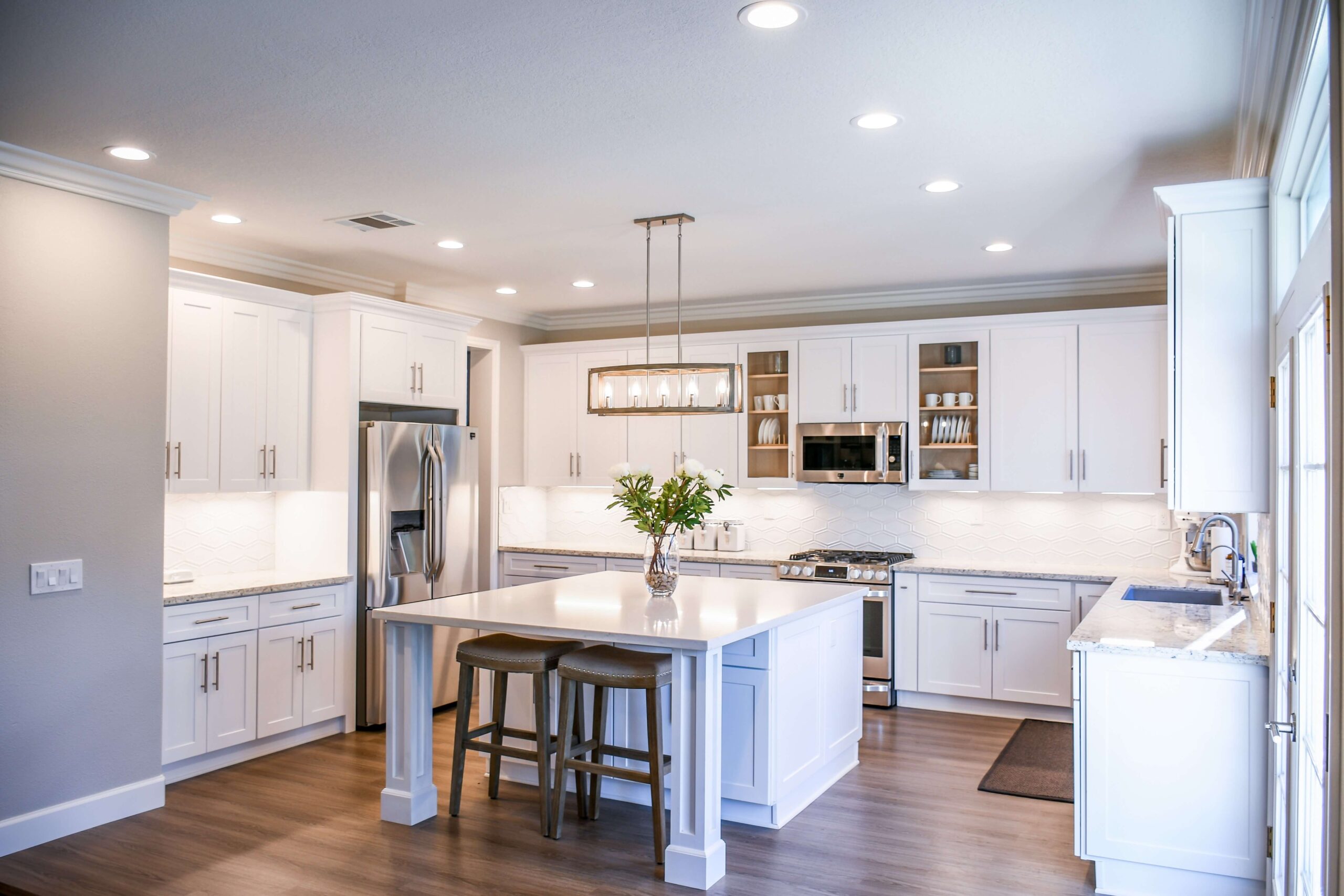Historical Trends in Kitchen Cabinet Design: Home Evolution Kitchen Cabinets

From humble beginnings as simple storage solutions to the statement pieces they are today, kitchen cabinets have mirrored societal shifts, technological advancements, and evolving aesthetic preferences. Their journey reflects not just changes in design, but also in the way we live and interact with our kitchens.
Home evolution kitchen cabinets – This evolution, spanning over a century, showcases a fascinating interplay between practicality and style, functionality and artistry. We’ll delve into the key eras, highlighting the defining characteristics of each period.
Kitchen Cabinet Styles Across Decades
The following table charts the major shifts in kitchen cabinet design throughout the 20th and early 21st centuries. Note that these are broad generalizations, and individual styles often overlapped and blended.
| Decade | Style Characteristics | Common Materials | Notable Design Features |
|---|---|---|---|
| 1920s-1930s | Simple, functional designs; often built-in; emphasis on craftsmanship. | Solid wood (oak, cherry, mahogany); painted finishes. | Plain paneled doors; simple hardware; often incorporated into architectural details. |
| 1940s-1950s | Streamlined, modern aesthetic; influence of mid-century modern design; focus on efficiency. | Solid wood (often lighter woods like maple); laminate; metal accents. | Clean lines; recessed handles; open shelving; use of color. |
| 1960s-1970s | Bold colors; eclectic styles; often featuring wood paneling and built-in appliances. | Laminate; particleboard; veneer; bold colored plastics. | Raised panel doors; large handles; integrated appliances; open shelving. |
| 1980s-1990s | Oak reigns supreme; ornate detailing; often dark stained finishes; a move towards more elaborate designs. | Oak; cherry; painted finishes; extensive use of laminate. | Raised panel doors; decorative molding; elaborate hardware; large kitchen islands. |
| 2000s-Present | Diverse styles; minimalist, transitional, and rustic aesthetics; customization and personalization. | Thermofoil; painted wood; glass; stainless steel; engineered wood; reclaimed wood. | Frameless construction; sleek hardware; integrated lighting; soft-close hinges and drawers. |
Shaker vs. Contemporary Minimalist Cabinets: A Comparison
Two distinct styles illustrate the spectrum of kitchen cabinet design: Shaker and contemporary minimalist. These styles represent contrasting design philosophies and aesthetic approaches.
Shaker cabinets, known for their simple, unadorned elegance, prioritize functionality and clean lines. They typically feature flat-panel or raised-panel doors with simple hardware, often employing solid wood construction. The focus is on craftsmanship and enduring quality. Imagine a warm, inviting kitchen, filled with the scent of freshly baked bread – that’s the Shaker spirit.
In contrast, contemporary minimalist cabinets embrace a sleek, modern aesthetic. These cabinets often feature frameless construction, handleless designs, and a monochromatic color palette. Materials might include high-gloss lacquer, thermofoil, or even concrete, reflecting a preference for clean lines and a lack of ornamentation. Think of a minimalist kitchen as a sophisticated canvas for culinary creativity.
Technological Advancements and Their Impact
Technological advancements have profoundly impacted kitchen cabinet design, influencing materials, manufacturing processes, and overall aesthetics.
The introduction of engineered wood products, such as plywood and medium-density fiberboard (MDF), revolutionized cabinet construction. These materials offered greater stability, consistency, and affordability compared to solid wood, allowing for more intricate designs and mass production. The development of new finishes, such as thermofoil and high-gloss lacquers, provided durability and a wide range of color and texture options. Computer-aided design (CAD) and computer-numerical control (CNC) machining have enabled precise manufacturing and intricate detailing, allowing for greater customization and efficiency.
Furthermore, innovations in hardware, such as soft-close hinges and drawer slides, have enhanced functionality and convenience. The integration of smart technology, such as automated storage solutions and integrated lighting, further reflects the ongoing evolution of kitchen cabinet design.
Modern Kitchen Cabinet Materials and Finishes

So, you’ve journeyed through the fascinating history of kitchen cabinets, and now we’re diving headfirst into the glorious, sometimes bewildering, world of modern materials and finishes. Prepare for a whirlwind tour of durability, aesthetics, and the occasional surprising sustainable option! Think of it as a cabinet-choosing adventure, where the only wrong choice is a boring one.
Choosing the right materials for your kitchen cabinets is a bit like choosing a life partner – you want something durable, aesthetically pleasing, and relatively low-maintenance. The good news is, unlike relationships, you can replace kitchen cabinets. The bad news is, that replacement might cost you more than a bad date.
Popular Kitchen Cabinet Materials
Let’s break down some popular choices, examining their pros and cons with the brutal honesty only a seasoned cabinet connoisseur can muster. We’ll consider durability, cost (because let’s face it, budgets exist!), maintenance (because nobody wants to spend their weekends scrubbing), and of course, that all-important aesthetic appeal.
- Wood (various types): Think oak, cherry, maple – the classics! Durability: High (depending on the wood and finish). Cost: Medium to High (solid wood is pricier). Maintenance: Medium (regular dusting, occasional polishing). Aesthetic Appeal: Timeless elegance, can be stained or painted for versatility. Example: A rich, dark cherry wood adds a touch of old-world charm, while a crisp white-painted oak offers a modern, clean feel.
- Laminate: The budget-friendly workhorse. Durability: Medium (can chip or scratch). Cost: Low. Maintenance: Low (easy to wipe clean). Aesthetic Appeal: Can mimic the look of wood or stone, but sometimes looks… well, a little *too* perfect. Example: A laminate cabinet mimicking granite offers a sleek, modern look without the hefty price tag.
- Melamine: Laminate’s slightly less glamorous cousin. Durability: Medium-low (more susceptible to scratches and damage). Cost: Very Low. Maintenance: Low. Aesthetic Appeal: Often found in plain colors or simple patterns. Example: A bright, cheerful melamine cabinet in a sunny yellow is perfect for a playful kitchen.
- Thermofoil: A vinyl wrap applied to a substrate. Durability: Medium (can peel or dent). Cost: Low to Medium. Maintenance: Low (easy to clean). Aesthetic Appeal: Smooth, consistent finish, available in a range of colors. Example: A sleek, high-gloss thermofoil cabinet in a vibrant shade of blue can create a bold statement.
- Acrylic: The high-gloss showstopper. Durability: High (resistant to scratches and stains). Cost: High. Maintenance: Low (easy to clean). Aesthetic Appeal: Ultra-modern, reflective finish. Example: A pristine white acrylic cabinet creates a clean, minimalist aesthetic.
Kitchen Cabinet Finishes: A Visual Feast, Home evolution kitchen cabinets
Now, let’s talk finishes. The finish is the icing on the cake – or, in this case, the gorgeous, perfectly-applied finish on your cabinets. The right finish can transform your kitchen from drab to fab.
Imagine a gallery of kitchen cabinet finishes:
- Painted: Think endless color possibilities! A classic white creates a bright, airy feel; a deep navy adds sophistication; a cheerful yellow brings sunshine into the kitchen. The impact is completely dependent on color choice.
- Stained: Shows off the natural beauty of the wood grain. A light stain highlights the wood’s texture; a dark stain creates a rich, dramatic look. The impact depends on the wood type and stain color.
- Glazed: Adds depth and dimension to the wood. A subtle glaze enhances the natural wood tones; a darker glaze creates a more antique look. The impact varies from subtle to dramatic.
- Distressed: Creates a rustic, vintage feel. Think worn edges and a slightly faded look. The impact is a feeling of aged charm and comfort.
Innovative and Sustainable Cabinet Materials
Finally, let’s explore the eco-conscious options, because even cabinets can be green! These materials offer environmental benefits but may come with trade-offs in terms of cost or durability.
- Bamboo: A rapidly renewable resource, bamboo cabinets are surprisingly strong and durable. Environmental benefits: Fast-growing, requires less water than traditional hardwoods. Potential drawbacks: Can be susceptible to moisture damage if not properly sealed.
- Recycled Materials: Cabinets made from reclaimed wood or recycled plastics offer a sustainable alternative. Environmental benefits: Reduces landfill waste and uses existing materials. Potential drawbacks: Can be more expensive and availability may be limited.
